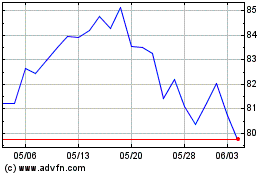New research finds employees value a variety of
benefit options, especially those who identify as caregivers
The landscape of employee benefits is evolving as employers are
faced with managing five generations in the workplace. A recent
survey from Principal Financial Group® reveals employees find value
in a variety of benefit options, and those options can influence
retention in their workplace. The value of these benefits are
magnified for employees who serve as caregivers for children,
dependent adults, or those in a “sandwich generation” caring for
both a dependent child and adult.
Caregiving impacts on employee retention
Family caregivers make up approximately 20% of the U.S. labor
force¹. According to the Principal Financial Well-Being IndexSM,
over one in five workers (24%) who are in a caregiving role for
both a child and dependent adult are more likely to say they want
to leave their current job. Additionally, 22% of caregivers in a
“sandwich generation” have left a previous job due to caregiving
responsibilities.
Caregivers across all categories are more likely to be concerned
about feeling burnt out at work, their own mental health and
well-being, and their caregiving responsibilities. Among those
currently caring for a child, adult, or both, benefits such as life
insurance and paid family and medical leave are the most
valued.
“There are unique opportunities for employers to support those
who are caregiving,” said Amy Friedrich, president of Benefits and
Protection at Principal®. “It starts with understanding your
employee population and their wants and needs in a benefits
program. With over half (54%) of the workforce identifying as a
caregiver at some point in their life, feeling financially
protected and supported at work is becoming increasingly
important.”
Employees value benefits in addition to healthcare and
retirement
Employees place a high value on benefits beyond health
insurance, paid time off, and retirement savings plans.
Specifically, employees see life insurance (64%), paid family and
medical leave (63%), and disability insurance (52%) as “extremely
valuable”. Further, the survey finds that higher job retention is
associated with more benefit options.
The survey also finds that 43% of employees reported receiving
communication about benefit options from their employers only one
time or less per year. Additionally, the research found that the
frequency of communication about benefits influences employee
understanding. The fewer times an employer reaches out to employees
about benefits, the less likely employees are to know what benefits
are available to them.
“It’s probably not surprising, but communication is essential to
ensuring employees understand the benefits employers are offering,”
said Friedrich. “For small-to-midsized businesses with no HR
department, it can be challenging to effectively communicate these
benefits. Being intentional about the ways you communicate, and how
often, is an important step in your benefits program.”
Business owners seeing growth and expansion but identify
rising concerns around inflation, the economy
While most businesses (69%) report the financial health of their
business is growing, a Well-Being IndexSM post-pandemic high,
employees and employers agree the stability of the U.S. economy is
an increasing concern. Employees and employers are aligned in
ranking the stability of the U.S. economy as a significant concern,
second only to economic inflation.
Even amid economic concerns, the outlook for hiring and
retention has stayed positive. Businesses continue to expand staff
(55%), employees are seeing wage increases (70%), and most
employees are satisfied with their current employment (87%).
Business owners are optimistic about future growth yet continue
to flag interest rates as a barrier. According to the report, 69%
of business owners say they are likely to need more capital in the
next 12 months and are increasingly looking to funding sources
beyond a business checking or savings account. At the same time,
most business owners (76%) report high interest rates as being a
barrier to capital access, a 13-point increase over this time last
year.
See all results and insights from the latest Principal Financial
Well-Being IndexSM (PDF).
About the Principal Financial Well-Being IndexSM
The Principal Financial Well-Being IndexSM surveys business
owners, decision makers and business leaders aged 21 and over who
work at companies with 2-10,000 employees and offer either health
insurance or retirement as an employee benefit. The nation-wide
survey, commissioned since 2012, examines the financial well-being
of American workers and business employers. In 2020, the Well-Being
Index was transformed from an annual survey to a regular pulse,
offering three waves, revisiting questions and measuring sentiment
regarding timely issues in the small and midsized business
marketplace. In the first pulse of the Well-Being Index in 2022,
the employee audience was added to the survey to compare and
contrast key sentiment from employers. The survey was commissioned
by Principal® and conducted online by Dynata from June 28 – July
10, 2024, with a total of 500 business owners, decision makers, and
business leader participants and a total of 500 employee
participants. The research report focuses on providing a holistic
perspective on key trends and timely issues in the small and medium
business market.
About Principal Financial Group®
Principal Financial Group® (Nasdaq: PFG) is a global financial
company with nearly 20,000 employees¹ passionate about improving
the wealth and well-being of people and businesses. In business for
more than 140 years, we're helping more than 62 million customers¹
plan, protect, invest, and retire, while working to support the
communities where we do business, and build a diverse, inclusive
workforce. Principal® is proud to be recognized as one of the 2023
World's Most Ethical Companies® by Ethisphere², a member of the
Bloomberg Gender Equality Index, and a "Best Places to Work in
Money Management³." Learn more about Principal and our commitment
to building a better future at principal.com.
¹ As of March 31, 2024 ² Ethisphere, 2024 ³ Pensions &
Investments, 2023
References: ¹ Lerner, D. (2022). Invisible Overtime: What
employers need to know about caregivers.
https://rosalynncarter.org/wp-content/uploads/2022/03/Invisible-Overtime-White-Paper.pdf
Dynata is not an affiliate of any company of the Principal
Financial Group®
Insurance products issued by Principal National Life Insurance
Co (except in NY) and Principal Life Insurance Co. Plan
administrative services offered by Principal Life. Principal Funds,
Inc. is distributed by Principal Funds Distributor, Inc. Securities
offered through Principal Securities, Inc., member SIPC and/or
independent broker/-dealers. Referenced companies are members of
the Principal Financial Group®, Des Moines, IA 50392.
© 2024 Principal Financial Services, Des Moines, IA 50392,
USA.
View source
version on businesswire.com: https://www.businesswire.com/news/home/20240910702172/en/
Lauren Peed, peed.lauren@principal.com 515-878-1164
Principal Financial (NASDAQ:PFG)
過去 株価チャート
から 3 2025 まで 4 2025

Principal Financial (NASDAQ:PFG)
過去 株価チャート
から 4 2024 まで 4 2025
